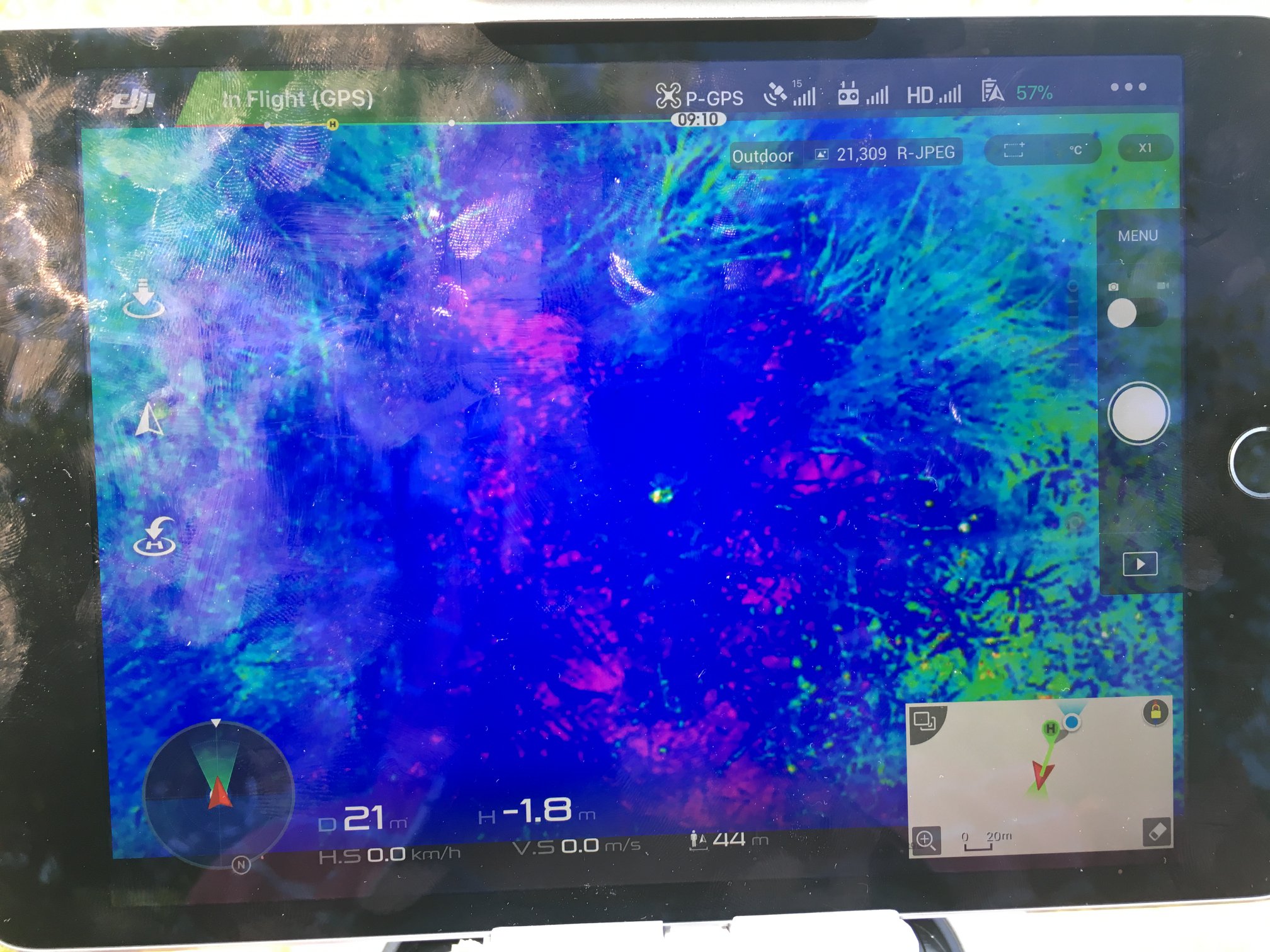
2020-2022
Master's Thesis Research
Austin Peay State University, Clarksville, TN
My current research includes studying the breeding biology of a temperate Neotropical migrant, the Louisiana Waterthrush, which is a species with potentially limited opportunities for extra-pair mating.
You can find more information about my project here.

In addition to my thesis project, I am also currently assisting with lab research looking at apparent survival and differential migration in overwintering White-throated Sparrows.

2018
Locating Grassland Bird Nests with a Drone-mounted Thermal Camera
Pierce Cedar Creek Institute, Hastings, MI
During the summer of 2018, I joined a team of recent graduates to conduct a grassland bird nest-searching technique study to assess the efficacy of drones as a survey tool. Technological advances in unmanned aerial vehicles (UAVs or drones) are an up-and-coming tool that have the potential to improve our ability to locate these hidden nests with minimal intrusion.  We compared the effectiveness of locating grassland songbird nests with a thermal camera mounted on a UAV versus the traditional nest searching techniques. We used a paired experimental design to determine whether UAV-assisted searches could replicate the results from traditional search methods. Both methods were highly successful at locating ground nests. UAV-assisted searches located nests 28% faster than traditional methods, but the results from a survival-style analysis indicated that the methods were not significantly different.
We compared the effectiveness of locating grassland songbird nests with a thermal camera mounted on a UAV versus the traditional nest searching techniques. We used a paired experimental design to determine whether UAV-assisted searches could replicate the results from traditional search methods. Both methods were highly successful at locating ground nests. UAV-assisted searches located nests 28% faster than traditional methods, but the results from a survival-style analysis indicated that the methods were not significantly different.
C.N.Scholten, A.J.Kamphuis, K.J.Vredevoogd, K.G.Lee-Strydhorst, J.L.Atma, C.B.Shea, O.N.Lamberg, D.S.Proppe. 2019. Real-time thermal imagery from an unmanned aerial vehicle can locate ground nests of a grassland songbird at rates similar to traditional methods. Biological Conservation 233, 241-246.
Presented at:
2018 - West MI Regional Undergraduate Science Research Conference, Grand Rapids, MI “A drone-mounted thermal camera is as effective as traditional methods for locating grassland bird nests”.
2018 - Pierce Cedar Creek Institute, Hastings, MI “A drone-mounted thermal camera is as effective as traditional methods for locating grassland bird nests”.

2017-2018
Effects of Prescribed Burns on Epigeal Arthropod Communities
Calvin University, Grand Rapids, MI
In the summer of 2017, I looked at the effect that prescribed burns have on the ground-dwelling arthropod community. Half of the prairie was burned in the spring of 2017, and the other half burned the year prior. Arthropods were sampled with pitfall traps and identified to species. Overall, almost all species were found to have declined in the year following a burn, with the exception of spiders and ants. Collebola, also known as springtails, were found to decline most strongly.
Presented at:
2018 - Michigan Academy of Science, Arts, and Letters, Alma College, Alma, MI “Impact of Fire on Prairie Epigeal Arthropod Populations”.
2017 - West MI Regional Undergraduate Science Research Conference, Grand Rapids, MI “Impact of Fire on Prairie Epigeal Arthropod Populations”.

2016-2017
Effects of Urbanization on Black-capped Chickadees
Calvin University, Grand Rapids, MI
During my undergraduate education, I participated in a research course looking at how urban landscapes effect fear responses in the Black-capped Chickadee, an urban-dweeling songbird. Chickadees that live near human dwellings must quickly learn how to respond to unfamiliar stimuli, which could alter their fear response to novel circumstances. 
Because exposure to anthropogenic stimuli is more common in birds that inhabit urbanized landscapes, their fear response patterns should more accurately reflect the risks associated with these stimuli. We conducted a series of feeder and playback experiments to explore whether urbanization altered Black-capped Chickadees’ fear responses to model cats, humans, a novel object, and anthropogenic noise. Our results suggest that behavioral plasticity may indicate the ability of a species to thrive in the urban environment.
Van Donselaar, J.L., Atma, J.L., Kruyf, Z.A. LaCroix, H.N. Proppe, D.S. 2018. Urbanization alters fear behavior in black-capped chickadees. Urban Ecosystms 21, 1043–1051.